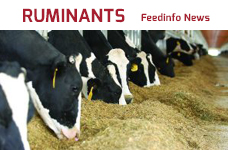



January 2022
According to Uwizeye et al. (2020), the livestock sector emits 65 Tg of nitrogen each year. That equals one third of the current human-induced nitrogen emissions and mainly results from the application of nitrogen fertilizers and manure on the soil. Although this is less than 6% of total global greenhouse gas emissions, according to Our World in Data, the industry still needs to focus on reducing greenhouse gas to be sustainable.
Ruminants use only a part of the nutrients and nitrogen present in their feed. Only 5-45% of the total quantity of nitrogen ingested is transformed into animal products (Oenema et al. 2008). The remaining part is excreted through the feces and urine and is then released into the environment. The various forms of nitrogen emissions can negatively impact land and water. Acidification changes the chemical composition of surface water and soil, making it more difficult for plants to assimilate nutrients. This results in decreased plant growth. Ammonia and NOx emissions not only contribute to climate change, but also lower air quality and disrupt freshwater aquatic ecosystems by contributing to a loss of biodiversity and eutrophication.
Given these potential harmful effects, it is essential that the industry takes these emissions seriously and takes steps to. A major priority for Adisseo is to be actively partnering with customers to develop solutions and educate the industry on the alternatives available. In today’s Industry Perspective, Brian Sloan, Business and Technical Director of Ruminant Amino Acids and Protected Nutrients, and Amel Hocini, Project Chief for Sustainability, identify how the ruminant industry has the tools to do better. Moreover, using these tools effectively can also lead to improved animal performance, reduced feed nitrogen inputs, and lower dependence on imported protein ingredients (which are themselves greenhouse gas-intensive). Finally, improved health and reproductive performance is associated with an increase in the productive life of dairy cows due to less voluntary culling, which further decreases the carbon footprint.